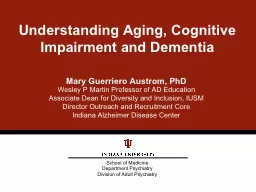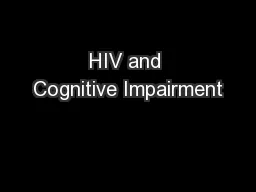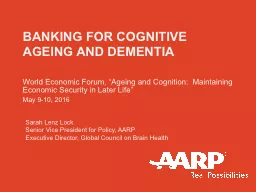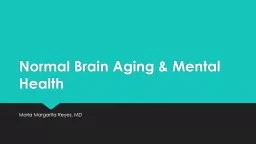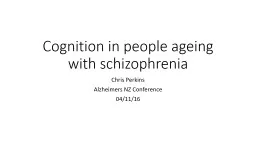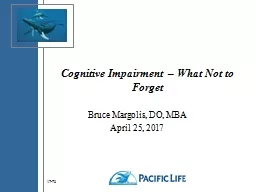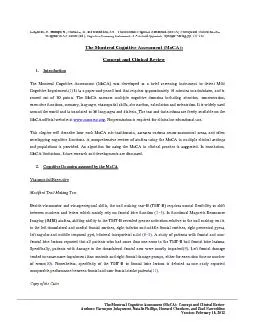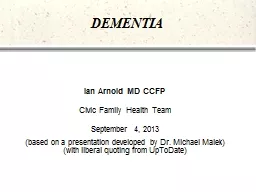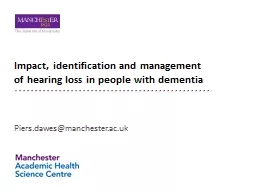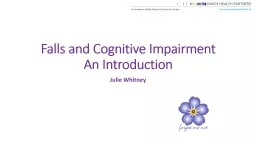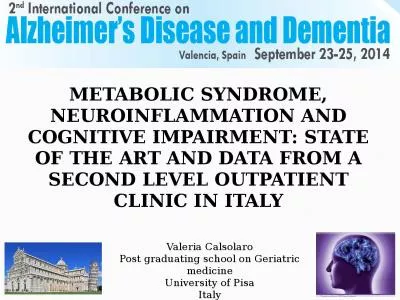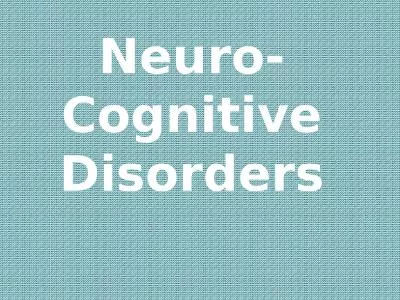PPT-Understanding Aging, Cognitive Impairment and Dementia
Author : lois-ondreau | Published Date : 2018-10-26
Mary Guerriero Austrom PhD Wesley P Martin Professor of AD Education Associate Dean for Diversity and Inclusion IUSM Director Outreach and Recruitment Core Indiana
Presentation Embed Code
Download Presentation
Download Presentation The PPT/PDF document "Understanding Aging, Cognitive Impairmen..." is the property of its rightful owner. Permission is granted to download and print the materials on this website for personal, non-commercial use only, and to display it on your personal computer provided you do not modify the materials and that you retain all copyright notices contained in the materials. By downloading content from our website, you accept the terms of this agreement.
Understanding Aging, Cognitive Impairment and Dementia: Transcript
Download Rules Of Document
"Understanding Aging, Cognitive Impairment and Dementia"The content belongs to its owner. You may download and print it for personal use, without modification, and keep all copyright notices. By downloading, you agree to these terms.
Related Documents

